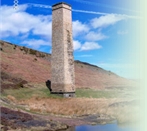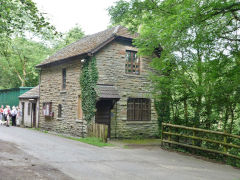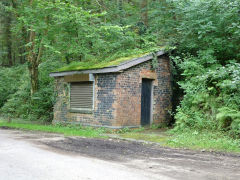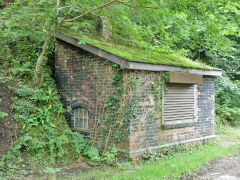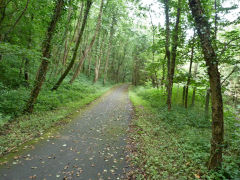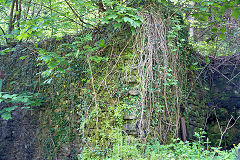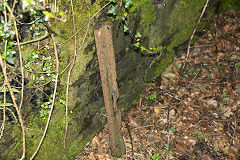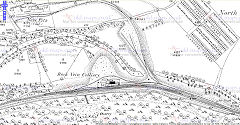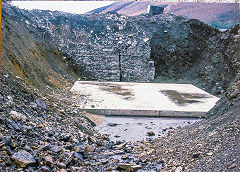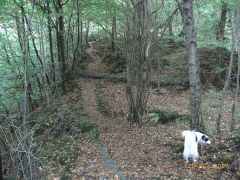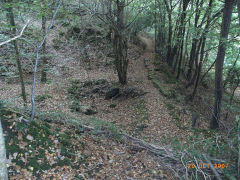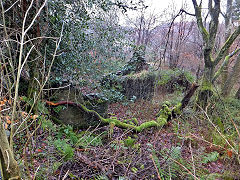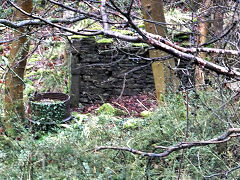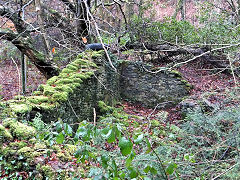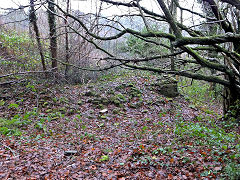The Industrial Archaeology and History of the Western Valley
Or click on the button to go to :-
Click on the thumbnail to enlarge a photo or map and sometimes read more about it.
Then click 'Full Size' on the toolbar to see it in all its glory.
Crosskeys
Cwm-byr-isaf farm - ST 2294 9184
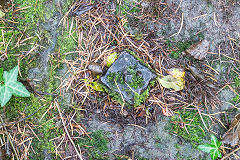
Cwm-byr-isaf farm
|
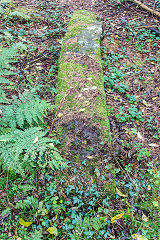
Cwm-byr-isaf farm
|
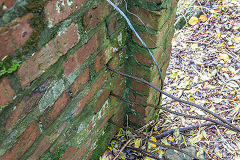
Cwm-byr-isaf farm
|
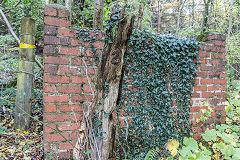
Cwm-byr-isaf farm
|
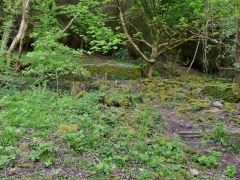
Cwm-byr-isaf farm
|
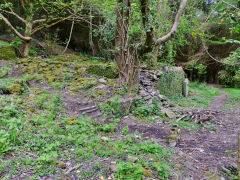
Cwm-byr-isaf farm
|
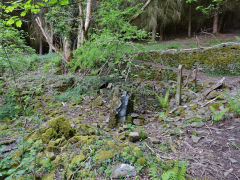
Cwm-byr-isaf farm
|
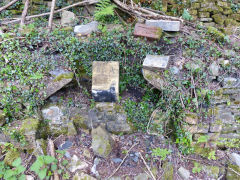
Cwm-byr-isaf farm
|
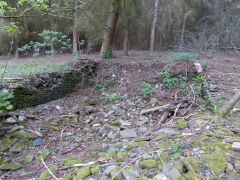
Cwm-byr-isaf farm
|
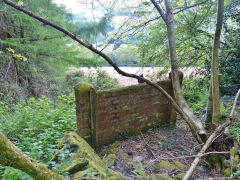
Cwm-byr-isaf farm
|
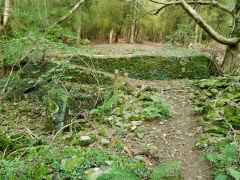
Cwm-byr-isaf farm
|
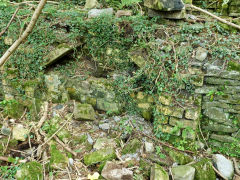
Cwm-byr-isaf farm
|
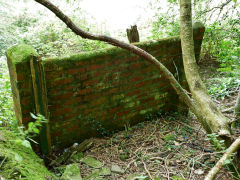
Cwm-byr-isaf farm
|
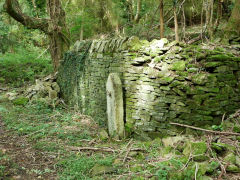
Cwm-byr-isaf farm
|
|
|
Around Crosskeys
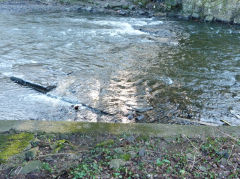
Blackvein Road bridge foundations
|
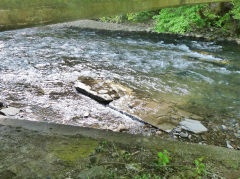
Blackvein Road bridge foundations
|
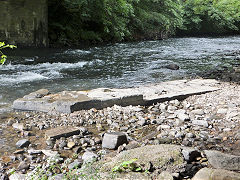
Blackvein Road bridge foundations
|
|
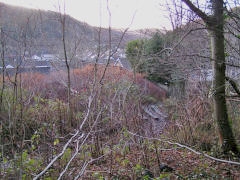
Crosskeys station footbridge
|
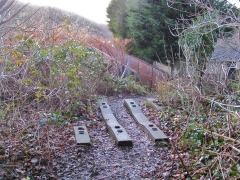
Crosskeys station footbridge
|
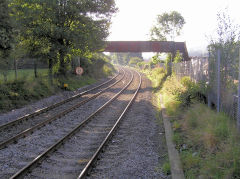
Crosskeys station footbridge
|
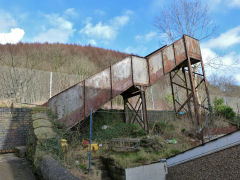
Crosskeys station footbridge
|
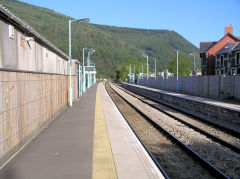
Crosskeys station
|
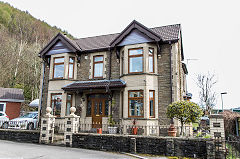
Crosskeys Station House
|
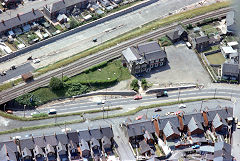
Crosskeys Hotel, 1976
|
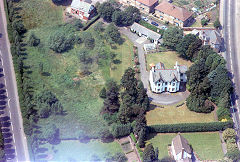
The Round House, Crosskeys
|
Halls Road Tramroad through Crosskeys
Halls Road Tramroad was originally a tramroad and then converted to a railway. It left the Western Valley line at Limekiln Junction in Risca and then ran through Crosskeys to Pontywaun before crossing the valley. Between Halls Road and the canal there's an odd collection of old sheds and foundations.
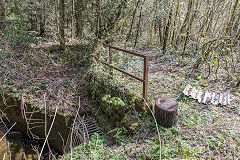
Hall's Road culvert bridge
|
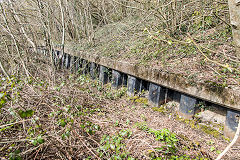
Hall's Road cutting wall
|
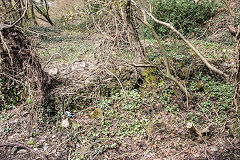
Rees Row, beside Hall's Road
|
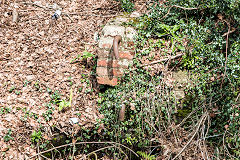
Rees Row, beside Hall's Road
|
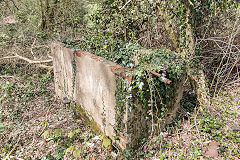
Water trough beside Hall's Road
|
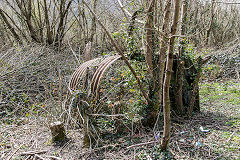
Sheds and foundations
|
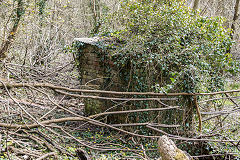
Sheds and foundations
|
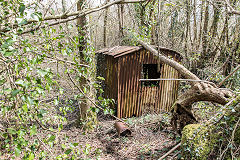
Sheds and foundations
|
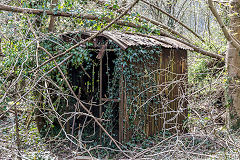
Sheds and foundations
|
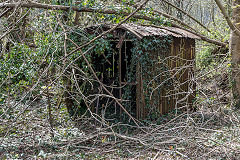
Sheds and foundations
|
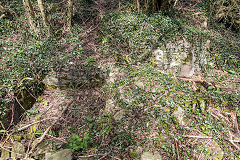
Sheds and foundations
|
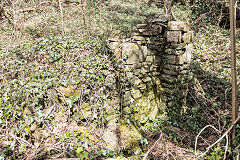
Sheds and foundations
|
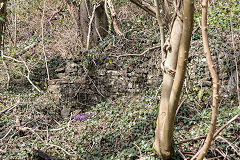
Sheds and foundations
|
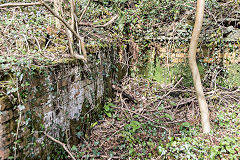
Sheds and foundations
|
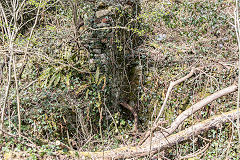
Sheds and foundations
|
|
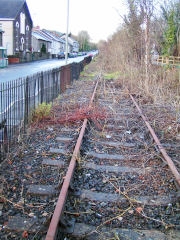
Halls Road looking North
|
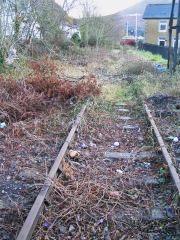
Halls Road looking South
|
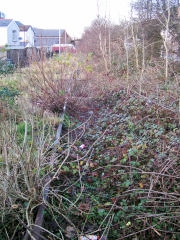
Halls Road looking North
|
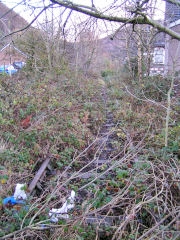
Halls Road looking South
|
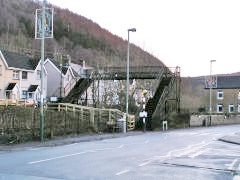
Halls Road Terrace footbridge
|
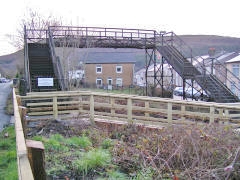
Halls Road Terrace footbridge
|
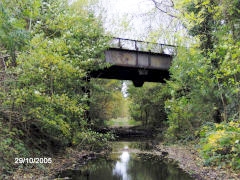
Twyncarn Road bridge
|
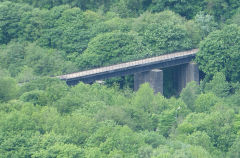
Ebbw River viaduct
|
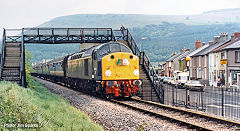
'D200 40122' at the High Street
|
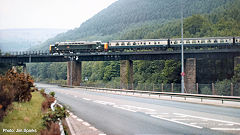
'D200 40122' on the viaduct
|
|
|
Cwmbyr Colliery (I), later Drill Hall Level - ST 2269 9165
Cwmbyr Colliery (I) was open by 1834 when its workings were recorded on Tredegar Estates maps. The older map shows the first cross heading of Protheroes Level ending near an air shaft. The later map shows Lemans Level (ST 2277 9183) by the air shaft, marked today by an iron ventilation pipe. Protheroe's level today emerges below the railway at the end of Greenmeadow Drive. At some point the colliery closed, before 1875 when the second Cwmbyr Colliery opened a mile or so further South in Risca. It seems to have been resurrected as Drill Hall Level in around 1900, possibly working until the 1920s. The Drill Hall in question turns up on the 1901 map and seems to be still there in the early 1970s.
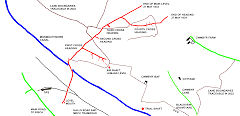
Cwmbyr Colliery, Crosskeys, 1834
|
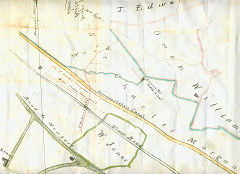
Cwmbyr Colliery, Crosskeys, c1835
|
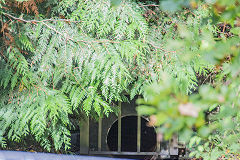
Drill Hall, Protheroe's level
|
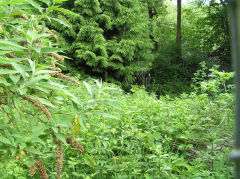
Drill Hall, Protheroe's level
|
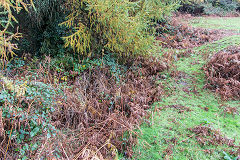
Drill Hall, Leman's Level
|
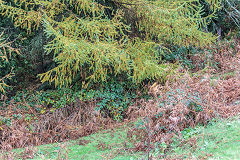
Drill Hall, Leman's Level
|
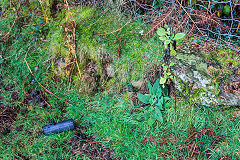
Leman's Level stonework
|
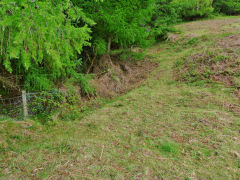
Drill Hall, Leman's Level
|
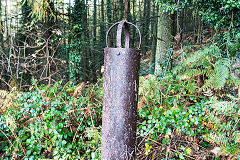
Leman's Level ventilation pipe
|
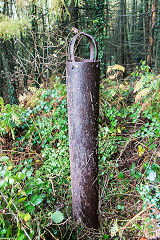
Leman's Level ventilation pipe
|
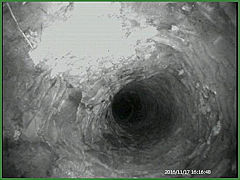
Interior of ventilation pipe
|
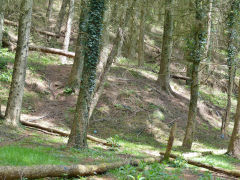
Workings next to Leman's Level
|
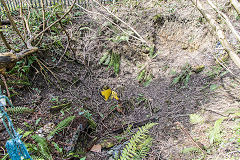
Possible Drill Hall Level collapse
|
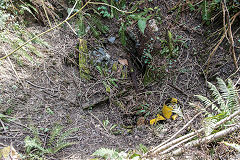
Possible Drill Hall Level collapse
|
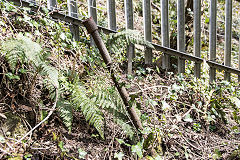
Pipe at collapse site
|
|
An additional route to Blackvein Colliery? - ST 2302 9168 to ST 2255 9133
This route from the Blackvein Colliery to the canal at Greenmeadow may well have provided additional access between the two sites. The lay of the land suggests that there could have been a more gentle route from the canal down to the Monmouthshire Tramroad (now the railway), down Medart Street and along Blackvein Road to Blackvein Colliery.
Full details are here :-
Risca Blackvein Colliery
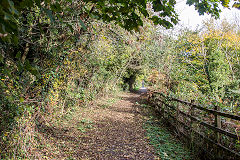
The route looking up
|
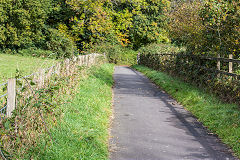
The route looking up
|
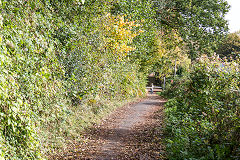
The route looking up
|
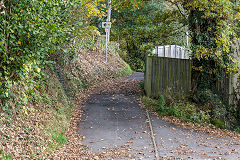
The route looking up
|
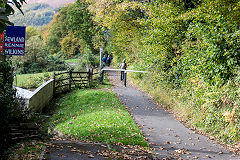
The route looking down
|
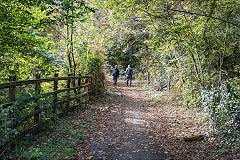
The route looking down
|
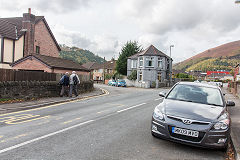
The route road crossing Medart Place
|
|
Blackvein or Waun-fawr village
Blackvein or Waun-fawr was a very disparate collection of houses, cottages and a school next to Blackvein Colliery. Until the 1950s the area was always shown as 'Waun-fawr' om the OS maps but now it is marked as 'Glenside' as so much of the old village has gone. It's often referred to locally and on census returns as Blackvein, Blackvein Cottages and Blackvein Bungalows.
The original Risca Blackvein Colliery and the industries around it have their own page here :-
Benson's Level - ST 2212 9128
Benson's level appears to be a drainage level, found just above the river by the footbridge. Being directly above the river there must have been another entrance higher up, somewhere around ST 218913. There were other small levels along the by-pass including Jack-y-North Pit at ST 221912 and Rock Vein on the middle of the by-pass roundabout at ST 214914.
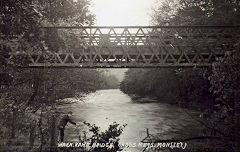
The Sirhowy River footbridge
|
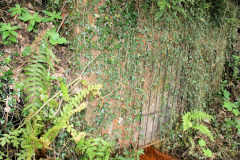
Bensons level drainage adit
|
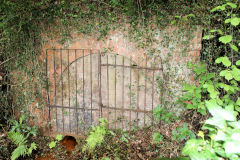
Bensons level drainage adit
|
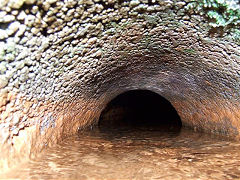
Bensons Level drain pipe !!
|
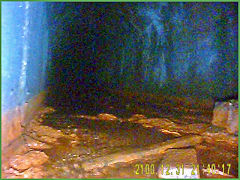
Interior of Bensons Level
|
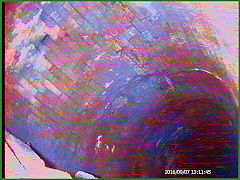
Interior of Bensons Level
|
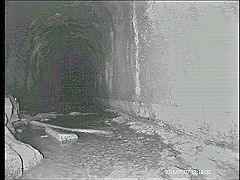
Interior of Bensons Level
|
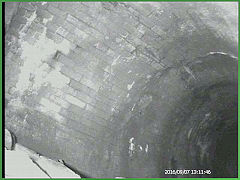
Interior of Bensons Level
|
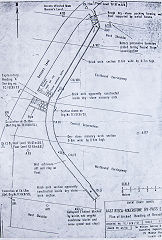
Plan of Bensons Level
|
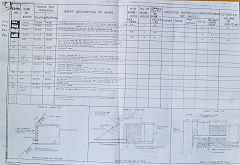
List of levels in the area
|
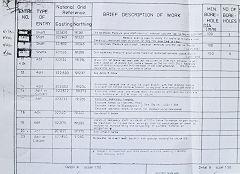
List of levels in the area
|
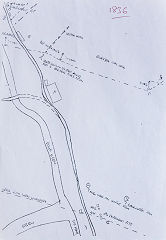
Sketch plan of Bensons Level
|
Glenside Bungalows - ST 2196 9124
There was a row of wooden bungalows known generally as 'Glenside Bungalows' to the West of Glenside House, past the pond. They were built after 1920 and demolished around 1959 the reason given was that they lacked mains water & drainage systems, hmmm. According to the 1962 OS map, beside the pond was 'Woodboro' with 'Park View' next door. Following on were Nos 3 to 6, 8 and 9, Nos 7 and 10 had already been demolished. The ruins are still there beside the footpath to Full Moon.
Chris Winton recalls "As a boy (aged 6 to 16) I lived with my parents and siblings at 8 Glenside Bungalows from late 1949 until late 1959 – a period I look back on with great nostaglia and fond memories – the whole area shown on the 1962 map was for us boys and girls what today would be called an adventure playground. The bungalows were condemned in 1959, ostensibly because they lacked mains water & drainage systems, however there were ulterior motives. There was a Number 7 Glenside Bungalows, this was soon demolished after everyone moved away in 1959, hence not showing up on the 1962 map. Some of the owners, including my father, reclaimed much of the material to build sheds, etc. or sell on. There was originally a Number 10 Glenside Bungalows, but this burnt down in about 1950, nearly taking 9 and 8 with it. The pond shown on the map was known as Pym’s pond."
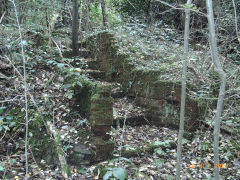
Glenside Bungalows
|
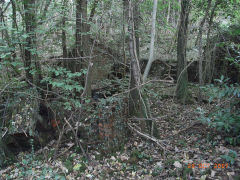
Glenside Bungalows
|
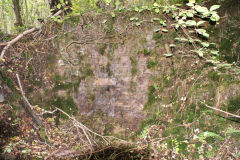
Glenside Bungalows
|
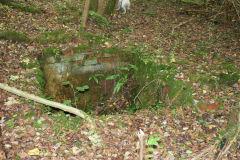
Glenside Bungalows
|
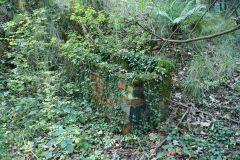
Glenside Bungalows
|
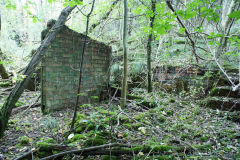
Glenside Bungalows
|
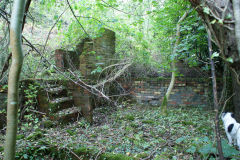
Glenside Bungalows
|
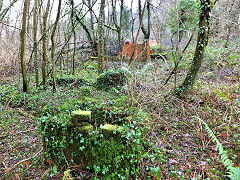
'Park View', Waun-fawr village
|
The centre of the village
Glenside Cottages - ST 2234 9115
The majority of Waun-fawr village has been demolished with the exception of a handful of much-rebuilt properties. Glenside House, Woodlands and Cartref have been swept away by the by-pass and further up Maytree Cottage and Sunnybank have disappeared. There was a terrace of 3 or 4 wooden cottages where the modern 'Glenside' now stands.
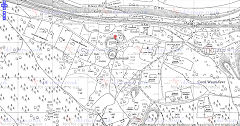
Waun-fawr village, 1962
|
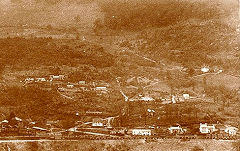
Waun-fawr village c1930s
|
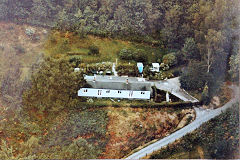
'Glenside' cottages from the air
|
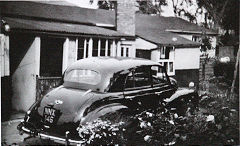
'Glenside' cottages, rear of No 3
|
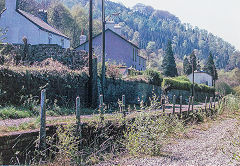
Waun-fawr village
|
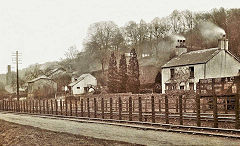
'The Woodlands', Waunfawr
|
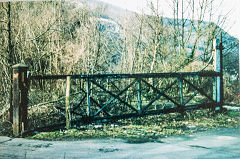
Waun-fawr level crossing
|
|
The Reservoir or Pym's Pond - SO 2216 9120
The remains of a small reservoir or pond may be the site of the very old Jack-y-North Pit. The stump of the gaslamp is by the footbridge. The inscription reads "Ham Baker and Co Limited. Engineers. Westminster".
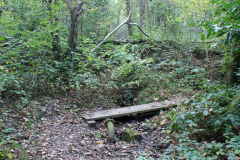
Reservoir dam
|
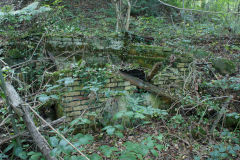
Reservoir valvehouse
|
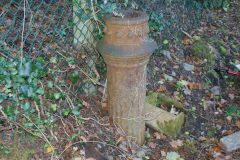
Lamp or pipe base near 'Glenside'
|
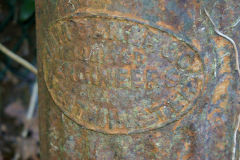
Lamp or pipe base near 'Glenside'
|
The Cottages beside the tramroad
Bluebell Bungalow - ST 2233 9104
Waun-fawr Bungalow - ST 2237 9104
OS maps show a pair of detached cottages to the North of the tramroad called 'Bluebell Bungalow' and 'Waun-fawr Bungalow'.
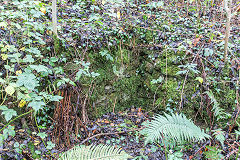
Bluebell Bungalow
|
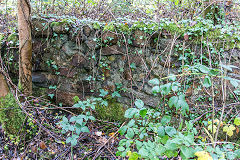
Bluebell Bungalow
|
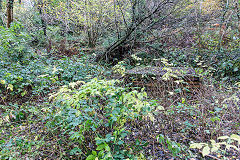
Bluebell Bungalow
|
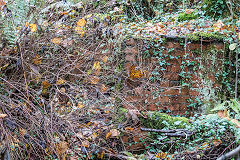
Bluebell Bungalow
|
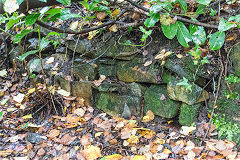
Bluebell Bungalow
|
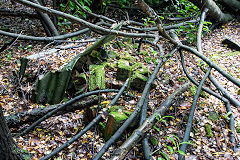
Bluebell Bungalow
|
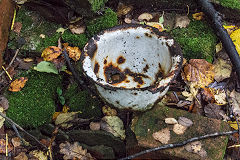
Bluebell Bungalow
|
|
Un-named bungalow - ST 2241 9101
Round Bungalow - ST 2244 9101
Similarly there were two cottages to the South of the tramroad near the head of the incline. The Eastern bungalow was 'Round Bungalow' but the other isn't named.
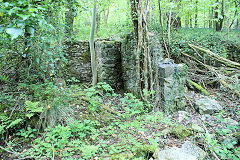
Un-named bungalow
|
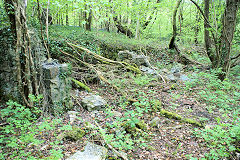
Un-named bungalow
|
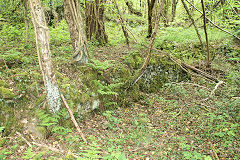
Un-named bungalow
|
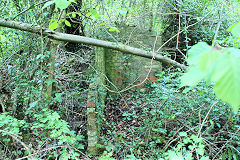
Un-named bungalow
|
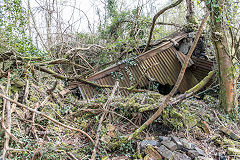
Round Bungalow
|
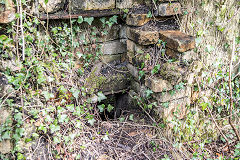
Round Bungalow
|
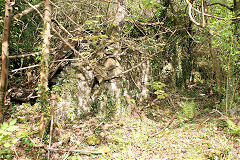
Round Bungalow
|
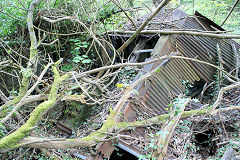
Round Bungalow
|
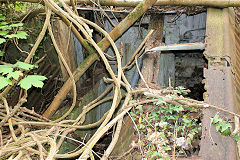
Round Bungalow
|
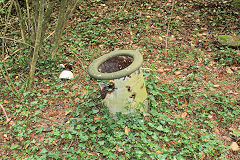
Round Bungalow
|
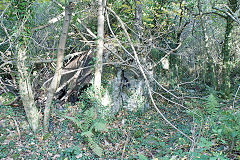
Round Bungalow
|
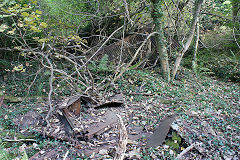
Round Bungalow
|
North Risca Colliery
North Risca Colliery - ST 2130 9160
The sinking of the New Pits, subsequently known as the North Risca Black Vein Colliery, began in 1875 by the 'London and South Wales Colliery Co Ltd' and the first coal was wound in 1878 from the original Black Vein seams. This colliery was just as dangerous as the original Blackvein Colliery at Waunfawr and in 1880 another 120 colliers were killed in a gas explosion. The company became part of the 'United National Collieries Ltd' in 1892, amalgamating with the 'Ocean Coal Co Ltd' in 1944 before nationalisation in 1947. Both winders were originally steam powered. The upcast shaft was converted to run on compressed air, while the downcast was electrified.The colliery closed in 1967 and the site is now the North Blackvein Industrial Estate where a few of the colliery buildings remain. There are also scant remains of tramway inclines to the quarries above the site. The most obvious memorial to the colliery are the tips on top of Machen Mountain.
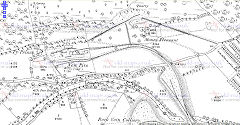
North Risca Colliery, 1883
|
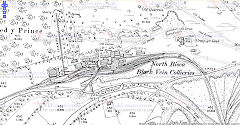
North Risca Colliery, 1901
|
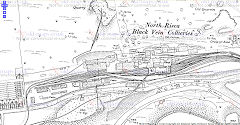
North Risca Colliery, 1920
|
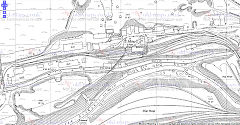
North Risca Colliery, 1965
|
1875 -1898
In these photos 'Ty Prince' farm is clearly visible to the West of the colliery and the Eastern quarry is at work. This quarry supplied stone for both the colliery and the village of North Risca (Crosskeys) down two inclines either side of Mount Pleasant or Craig-yr-haul farm. The last photo shows a third incline running towards what became the Western quarry. The Cornish engine house is prominent.
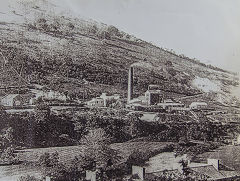
North Risca Colliery, Crosskeys
|
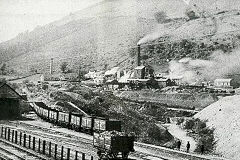
North Risca Colliery, Crosskeys
|
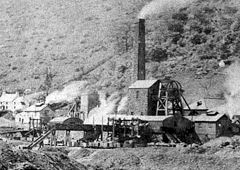
North Risca Colliery, Crosskeys
|
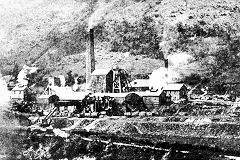
North Risca Colliery, Crosskeys
|
1898 - c1915
The colliery has expanded and 'Ty Prince' is hidden behind other buildings and the upcast shaft has low headgear. On 23 February 1901, a fire burnt down the winding house but the winding engine doesn't seem to have been badly damaged.
The photo of the crowd scene is believed to be from the National Coal Strike of 1912. A similar photo shows the same bowler-hatted gentleman, a reporter perhaps, with a different group of men at Risca Blackvein Colliery.
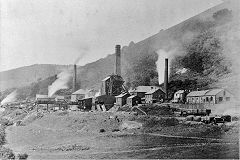
North Risca Colliery, Crosskeys
|
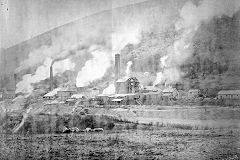
North Risca Colliery, Crosskeys
|
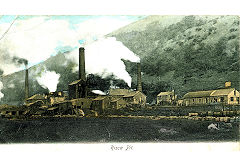
North Risca Colliery, Crosskeys
|
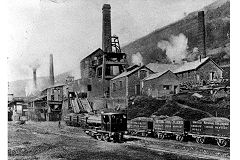
North Risca Colliery, Crosskeys
|
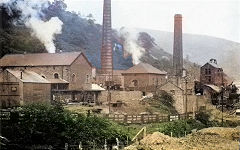
North Risca Colliery, Crosskeys
|
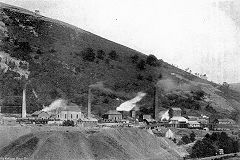
North Risca Colliery, Crosskeys, 1908
|
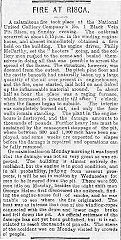
Colliery fire, 23 February 1901
|
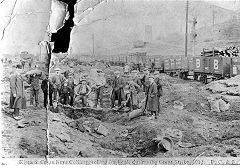
National Coal Strike, 1912
|
c1915 - c1930
The colliery has reached Wattsville and is at its greatest extent. The coke ovens have been built and the upcast shaft has new, taller headgear. Later the roof of the Cornish engine house is removed, followed by the engine house itself. In 1916 a by-products plant became operational making crude benzole from the coke ovens. The larse square building in the lower left corner of the site had tar lined internal walls and with lights from outside shining in. There were large carboys inside into which a colourless liquid dripped. Other areas contained the coal crushers and gas scrubbers.
In 1926 the aerial ropeway was built following agreement with the GWR to cross the Sirhowy Valley line.
The Cornish beam engine house is still complete.
|
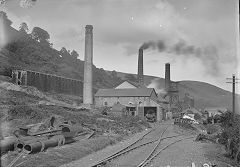
North Risca Colliery, Crosskeys
|
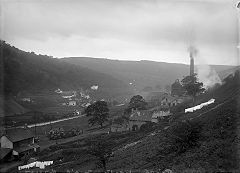
North Risca Colliery, Crosskeys
|
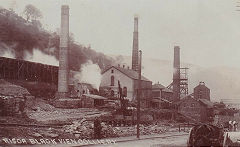
North Risca Colliery, Crosskeys
|
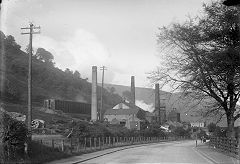
North Risca Colliery, Crosskeys
|
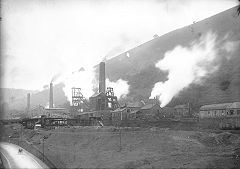
North Risca Colliery, Crosskeys
|
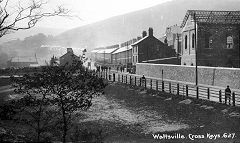
North Risca Colliery benzole house
|
|
The roof of the Cornish engine house has gone In the first two photos and in the third, it is being demolished
|
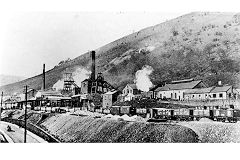
North Risca Colliery, Crosskeys
|
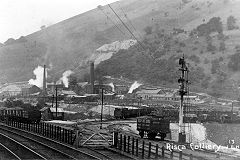
North Risca Colliery, Crosskeys
|
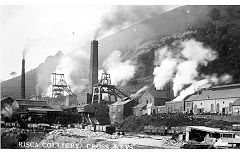
North Risca Colliery, Crosskeys
|
c1930 - c1960
The two winding house chimneys have been demolished but a new conveyor and tower have been built by the coke ovens. In latter years, railway wagons were also repaired in one of the sheds at the top of the stiff incline up through the mine site towards the coke battery end.
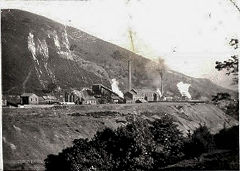
North Risca Colliery, Crosskeys
|
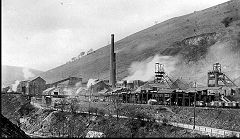
North Risca Colliery, Crosskeys
|
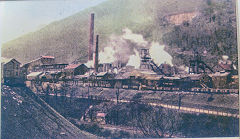
North Risca Colliery, Crosskeys
|
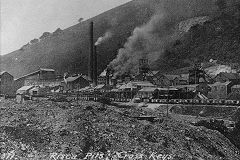
North Risca Colliery, Crosskeys
|
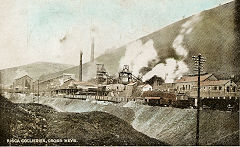
North Risca Colliery, Crosskeys
|

Colliery By-products works
|
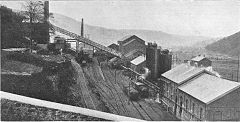
Colliery By-products works
|
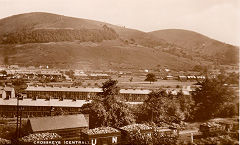
North Risca Colliery weighbridge
|
c1960 - 1970s
It looks as if the colliery has now closed and is getting increasing derelict.
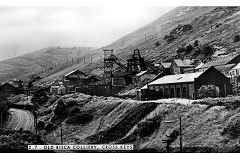
North Risca Colliery, Crosskeys
|
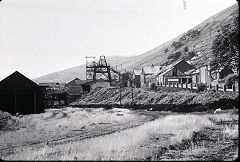
North Risca Colliery, Crosskeys
|
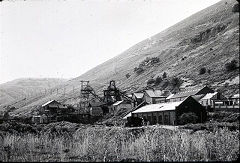
North Risca Colliery, Crosskeys
|
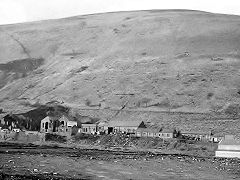
North Risca Colliery, Crosskeys
|
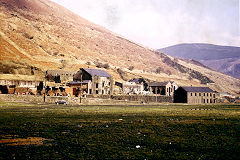
North Risca Colliery, Crosskeys
|
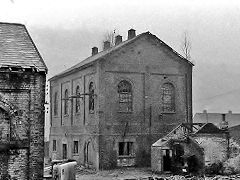
North Risca Colliery, Crosskeys
|
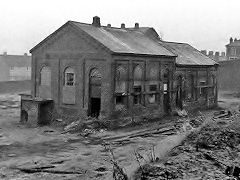
North Risca Colliery, Crosskeys
|
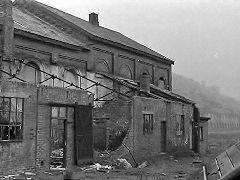
North Risca Colliery, Crosskeys
|
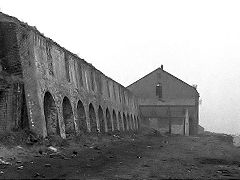
North Risca Colliery, Crosskeys
|
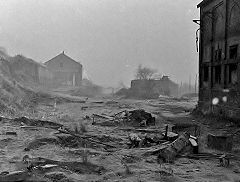
North Risca Colliery, Crosskeys
|
|
|
1976 and beyond
Some of the colliery buildings are still used by light industry and commercial companies.
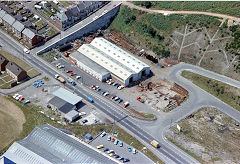
North Risca Colliery, Crosskeys
|
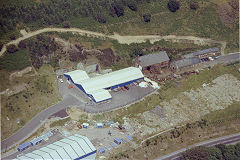
North Risca Colliery, Crosskeys
|
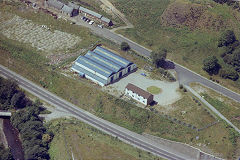
North Risca Colliery, Crosskeys
|
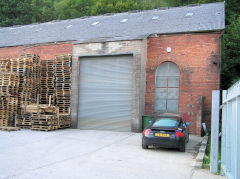
North Risca Colliery buildings
|
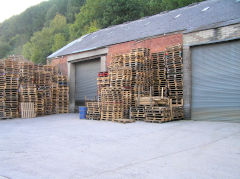
North Risca Colliery buildings
|
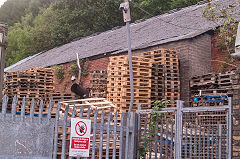
North Risca Colliery buildings
|
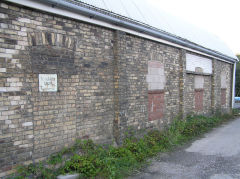
North Risca Colliery buildings
|
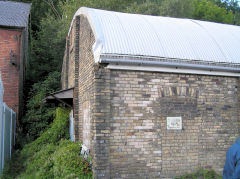
North Risca Colliery buildings
|
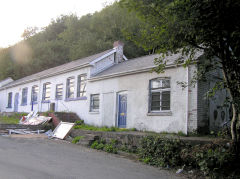
North Risca Colliery buildings
|
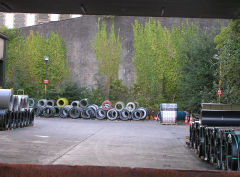
North Risca Colliery back wall
|
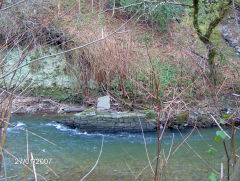
Riverside pumphouse foundations
|
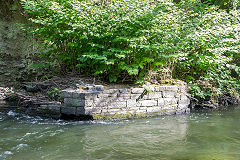
Riverside pumphouse foundations
|
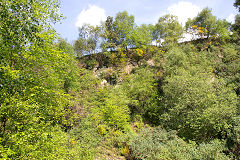
North Risca Colliery Quarry
|
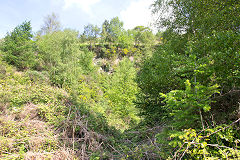
North Risca Colliery Quarry
|
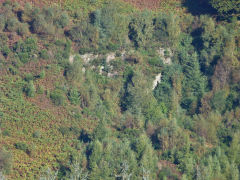
North Risca Colliery Quarry
|
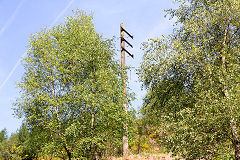
Telephone pole below the quarry
|
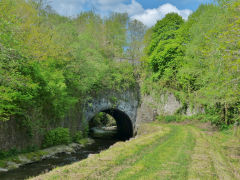
North Risca Colliery river bridge
|
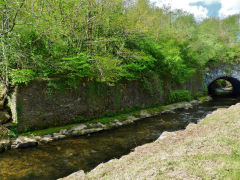
North Risca Colliery river bridge
|
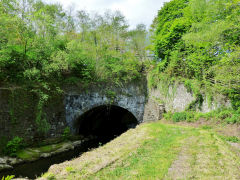
North Risca Colliery river bridge
|
|
North Risca Colliery aerial ropeway
the aerial ropeway was built around 1926 after the GWR agreed to it crossing the Sirhowy Valley line. On closure the cable was cut and left where it fell, down the mountainside. The bases of the pylons can be followed from the river bank to the end of the tips.
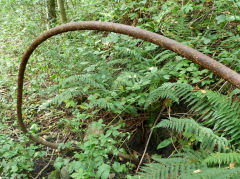
North Risca Colliery ropeway cable
|
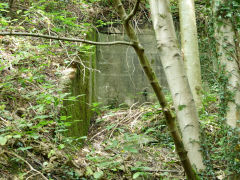
Colliery ropeway tower base
|
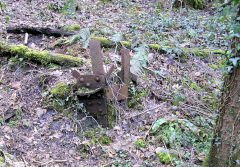
Aerial ropeway pylon at Full Moon
|
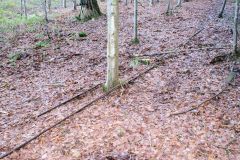
Aerial ropeway cables
|
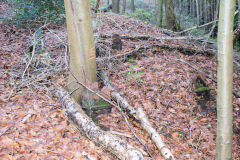
Aerial ropeway pylon
|
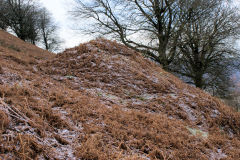
Aerial ropeway pylon
|
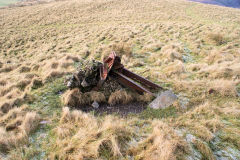
Aerial ropeway pylon
|
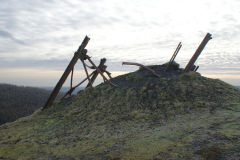
Aerial ropeway pylon
|
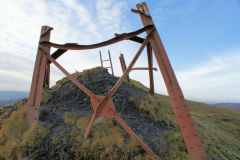
Aerial ropeway pylon
|
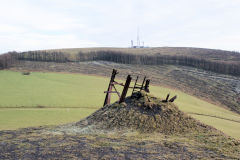
Aerial ropeway pylon
|
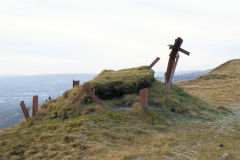
Aerial ropeway pylon
|
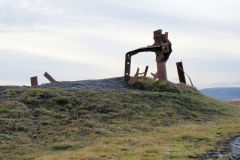
Aerial ropeway pylon
|
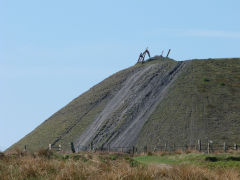
Aerial ropeway pylon
|
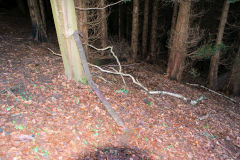
Aerial ropeway bucket release
|
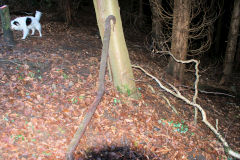
Aerial ropeway bucket release
|
|
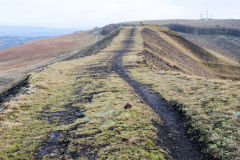
North Risca Colliery tip
|
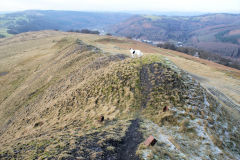
North Risca Colliery tip
|
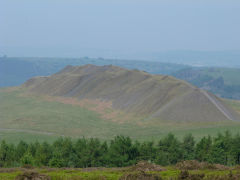
North Risca Colliery tip
|
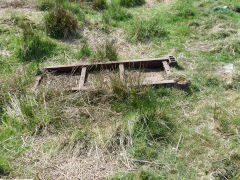
Iron frame beside colliery tip
|
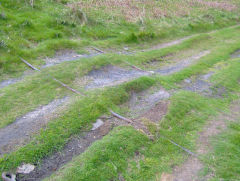
Colliery tip ropeway cables
|
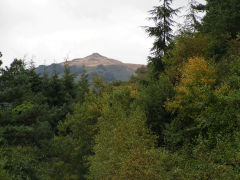
Colliery tip from Sirhowy Valley
|
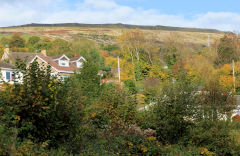
Colliery tip from Machen
|
|
Cox's Quarry, Crosskeys
Cox's Quarry, Crosskeys - ST 2165 9200
John Cox and his family moved to Crosskeys c1855 and had established their original small quarry by 1857. With the expansion of Crosskeys and Wattsville from North Risca Colliery, Cox opened a larger quarry further up the hillside in the mid 1870s. Following WW1 the Cox family sold the quarry and it closed down in the mid 1920s.
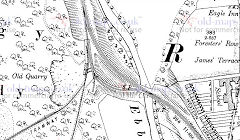
Cox's Quarry loading bank, 1901
|
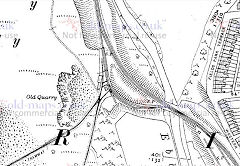
Cox's Quarry loading bank, 1920
|
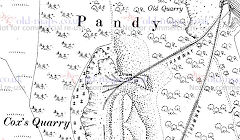
Cox's Quarry North, 1901
|
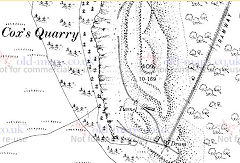
Cox's Quarry South, 1901
|
Cox's Quarry loading bank - ST 2180 9218
The loading bank for the quarries was on a siding built on the trackbed of the 'Monmouthshire Canal Co' tramroad. The curve of the tramroad was too sharp for locomotives so the current railway line was built further away leaving a spur of embankment, ideal for a siding.
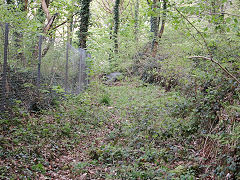
Loading bank sidings looking South
|
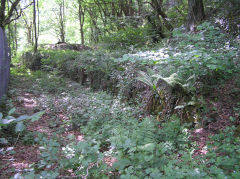
Loading bank sidings looking South
|
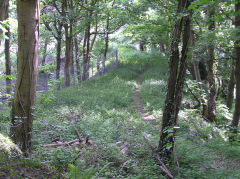
Loading bank sidings looking East
|
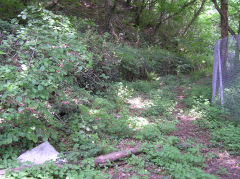
Loading bank sidings looking North
|
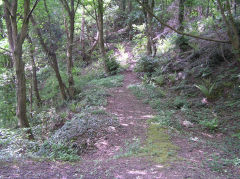
Loading bank, South incline foot
|
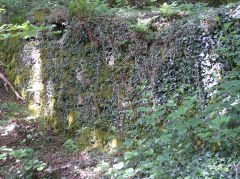
Loading bank stonework
|
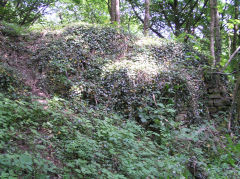
Loading bank stonework
|
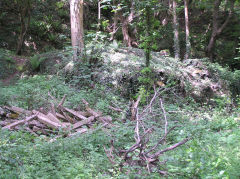
Loading bank stonework
|
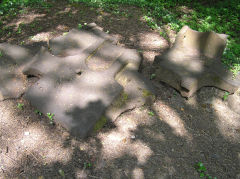
Loading bank ironmongery
|
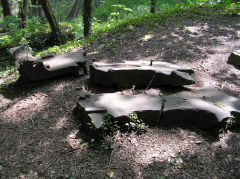
Loading bank ironmongery
|
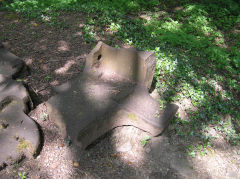
Loading bank ironmongery
|
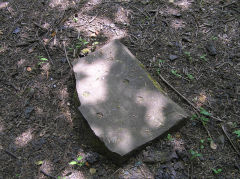
Loading bank ironmongery
|
Foot of the inclines and the original quarry - ST 2176 9216
A short incline lead to the original small quarry and this was extended up the hill to the later quarry, A second incline from the other end of the quarry came down to the same point at the loading bank.
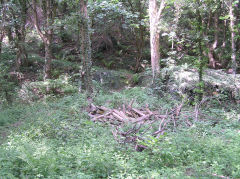
Incline to foot of main inclines
|
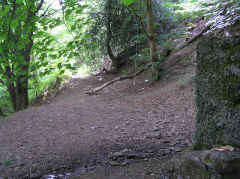
Foot of both quarry inclines
|
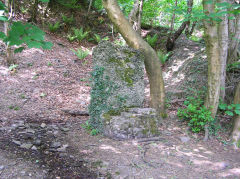
Foundations at foot of inclines
|
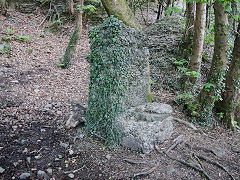
Foundations at foot of inclines
|
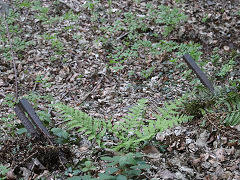
Foundations at foot of inclines
|
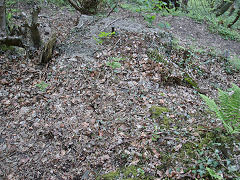
Foundations at foot of inclines
|
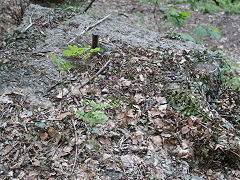
Foundations at foot of inclines
|
|
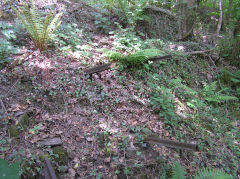
Foot of North incline
|
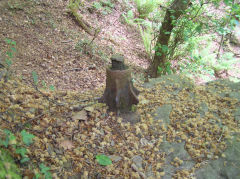
Foot of North incline
|
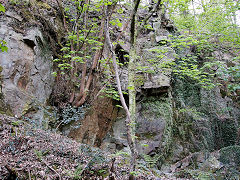
Cox's Quarry original workings
|
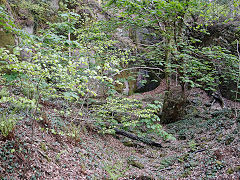
Cox's Quarry original workings
|
The main quarry workings - ST 2165 9200
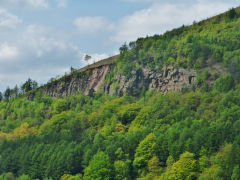
Cox's Quarry from Crosskeys
|
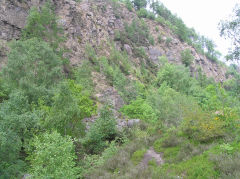
Inside Cox's Quarry
|
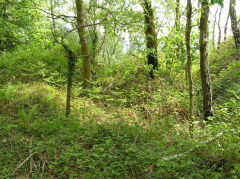
North incline top
|
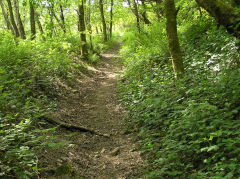
South incline
|
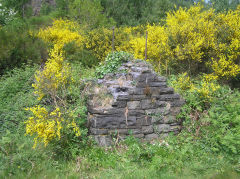
South incline brakehouse front
|
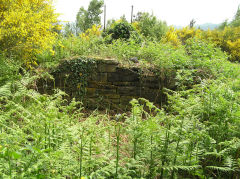
South incline brakehouse rear
|
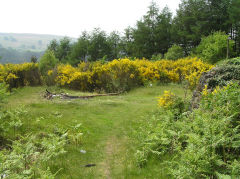
South incline top from brakehouse
|
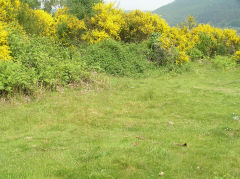
South incline top from brakehouse
|
Acknowledgments, sources and further reading
Thanks for the use of their memories, photographs and maps to :- Dave Bryant, Jim Coomer, Mike Harris, Jim Sparks, Chris Winton and members of Oxford House Industrial History Society and Risca Museum.
GGAT report no. 2015/020, 'The Sinews of War'.
Bryan Morgan - 'The Location of Edward Jones' 1799 Tramroad - A personal assessment based on contemporary correspondence' - OHIHS, available on the 'publications' page of the
Risca Museum website
A Guide to the Website
Industrial Wales
Collieries, Ironworks, Quarries, Railways, Canals, Tramroads, Tunnels, Culverts and so much more....
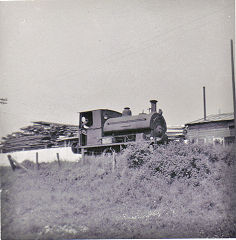
|
Brickworks of Wales
Bricks are 'History with a label' so here's the story of the Brickworks of Wales - photos, maps and the products themselves
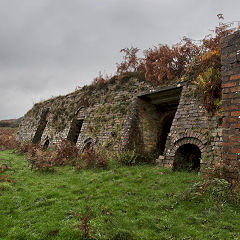
|
Around the World
My travels around the UK and the Whole Wide World in search of industries, railways, trams and mines to name a few.
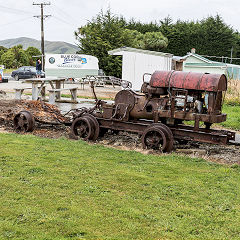
|
Boundary Stones and Mileposts
Boundary Stones, Mileposts and other markers in simple alphabetical order of their initials, name or site.
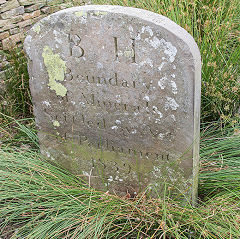
|
Ships and Shipping
Ships around the World in simple alphabetical order of their name (or apparent area if I can't read the name).
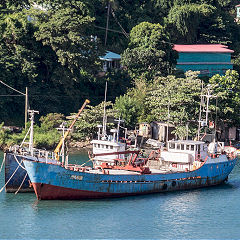
|
The Site Map and Index
A full list of all the pages of the whole website in just one place, so you should find exactly what you are looking for.
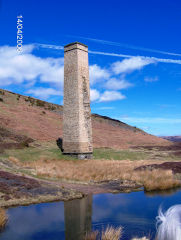
|
About the Site
The background and technical details about the site, plus a contact page and links to other sites - and a warning !!
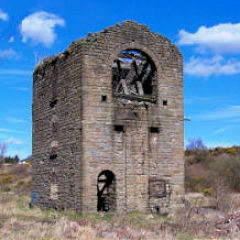
|
Contact Me
Something to add? A great photo? Something wrong? or need to know more about things? Just drop me a line here.

|
Further Reading
You can find lots of local and other very helpful websites, books, magazines and Facebook groups all listed here.
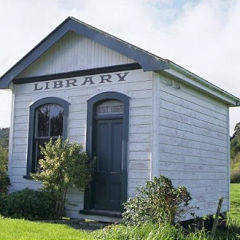
|
All rights reserved - Phil Jenkins
